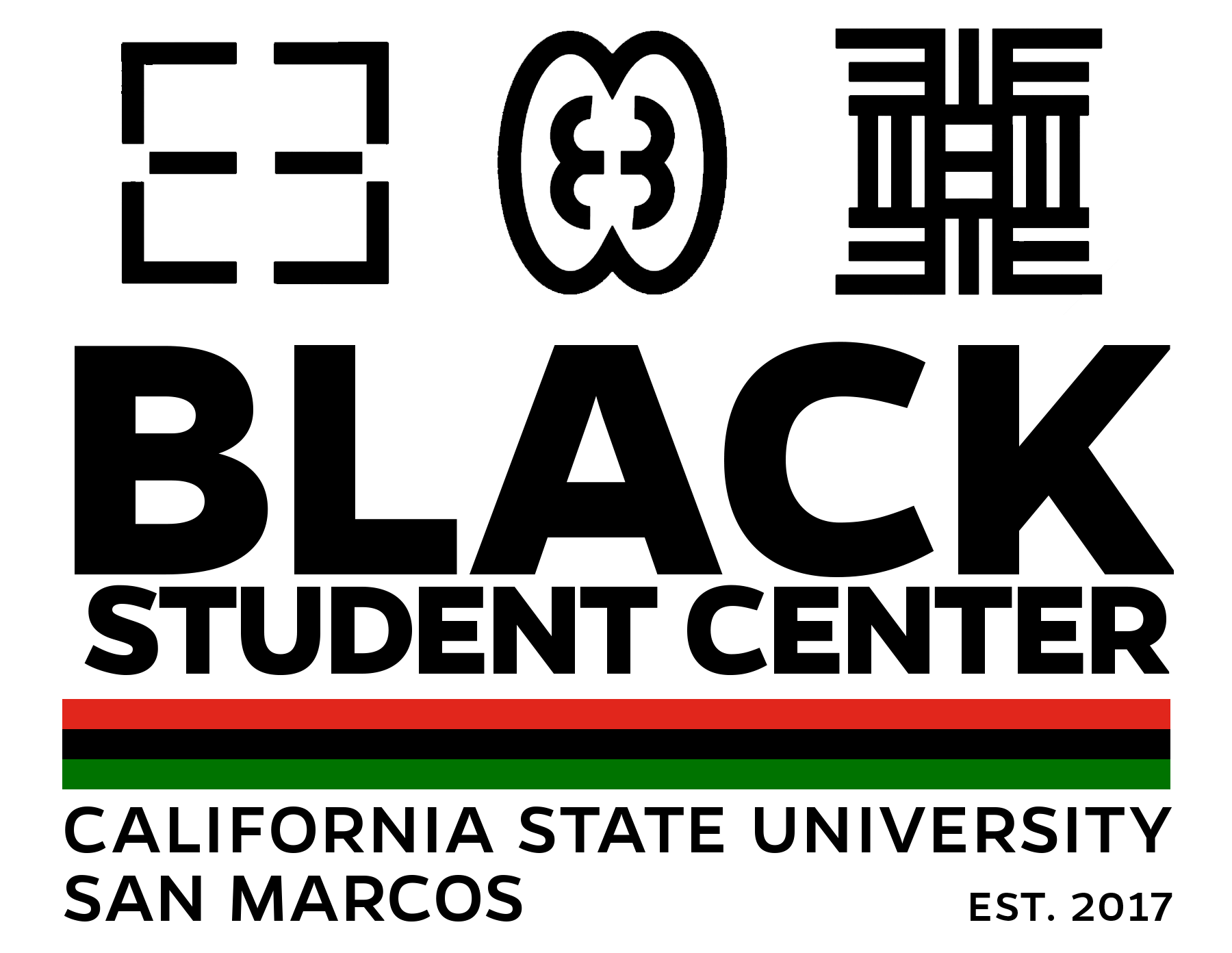 myCSUSM
myCSUSMBSC Logo Explained

The Black Student Center logo was updated in the fall of 2022 to reflect a new direction for the center. The logo was inspired to pay tribute to our roots to the Motherland of Africa and to promote and emphasize the values of the Black Student Center.
At the top of the logo are a set of selected Adinkra symbols, which were originally designed by "Asante" craftsmen of Ghana, West Africa. The symbols embody non-verbal communicative and aesthetic values, as well as the way of life of the people who designed them. The symbols are usually printed on cotton fabric to produce "Adinkra cloths," which may be worn on such celebratory occasions as child naming, community durbars and funerary rituals. Each of the symbols has its Asante name and an accompanying literal English translation.*
The selected symbols at the top of the logo (l-r) are:
- Woforo Dua Pa A: When you climb a good tree, you are given a push. It means that when you offer support to good causes, you will receive support in return. It represents encouragement, support, and cooperation.
- Nkonsonkonson: Depicts two links in a chain. It represents unity, community, and the strength that comes from each.
-
Nea Onnim: Represents the quest for knowledge and lifelong learning/education. It comes from a proverb meaning, “one who does not know can know from learning.”
The colors of the Pan-African Flag are used in the logo to honor the African Diaspora and to symbolize Black liberation in the United States, which we believe can be achieved in part through the pursuit of education.
We use the term BLACK as an all-inclusive term to represent the people whose racial/ethnic identities lie within the African Diaspora (the worldwide collection of communities descended from native Africans or people from Africa. Most commonly refers to the descendants of those who were enslaved and shipped to the Americas via the Trans-Atlantic slave trade between the 16th and 19th centuries).
Finally, the logo denotes the year in which the Center was established and opened at CSUSM through the advocacy of student leaders, with the support of faculty, staff, and administrators.






